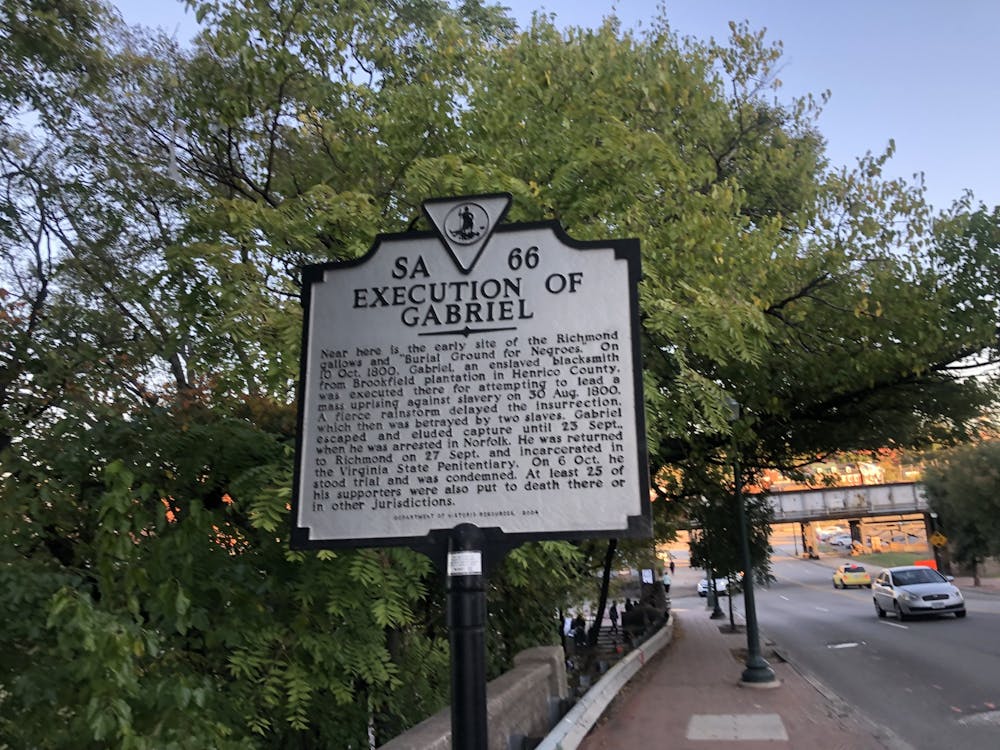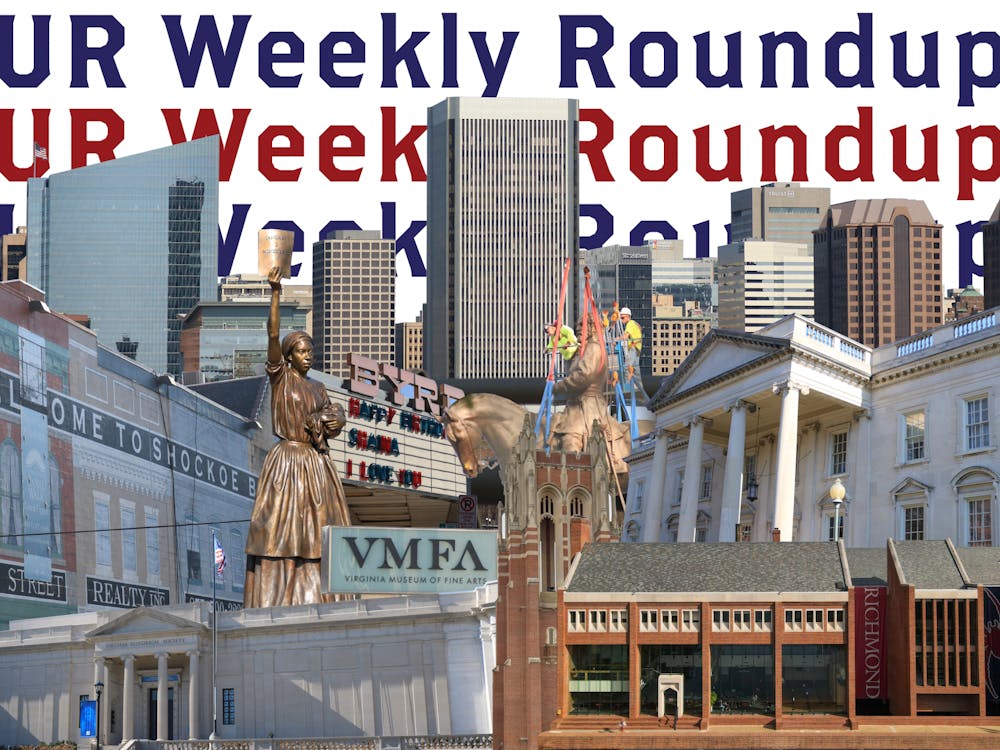As the sun began to set on the railroad tracks weaving through Richmond’s Shockoe Bottom, many were just making their way to a sacred ground just north of East Broad Street by Interstate 95 on Oct. 10.
Richmond community members gathered at the Shockoe Bottom African Burial Ground to celebrate the 20th Annual Gabriel Gathering, presented by the Sacred Ground Historical Reclamation Project of the Virginia Defenders for Freedom, Justice & Equality.
The gathering is hosted each year to commemorate the day when Gabriel, a rebellion leader who had been enslaved, was executed at the town gallows, said project founder Ana Edwards. Although thwarted, Gabriel had planned one of the most significant rebellions in the U.S.
“We gather to honor Gabriel and all those who gave their lives in the cause of freedom, to celebrate more than 20 years of learning the history of this sacred ground and to rededicate ourselves to reclaiming and properly memorizing Shockoe Bottom, once the epicenter of the U.S. domestic slave trade,” Edwards said in a statement from the Virginia Defenders.
The commemoration began on Oct. 8 with the projection of video images on the walls of the East Broad Street tunnels portraying the history of the region with Recontextualizing Richmond — an initiative by the same organization that projected images onto the Robert E. Lee statue during the height of the Black Lives Matter protests in 2020. The light art continued into Monday evening’s festivities.
Co-moderator Joseph S.H. Rogers, member of the Virginia Defenders and a descendant of James Apostle Fields — who was born into slavery and later elected to the Virginia General Assembly — reminded the audience of the significance of the 20-year anniversary. In census records, 20 years is an entire generation, he said.
“Think about the people who are gathered here and who have been gathering here,” Rogers said. “For a generation of young people who have known this space not as a parking lot, but as sacred ground.”
During the ceremony, Vanessa Bolin, the founder of the Richmond Indigenous Society, gave remarks honoring Indigenous People’s Day, celebrated on Oct. 10.
“The fact that we are still here today shows a sign of resiliency,” Bolin said to the crowd. “The fact that Africans have fought and won their freedom is a sign of resiliency. Each black and brown person standing here today. You are the dreams of your ancestors.”
Following the libation ceremony and messages of solidarity from some of Virginia’s leading advocates, there were remarks from other community members, including Pamela Bingham. Bingham, a direct descendent of Gabriel and family historian, said everyone gathered for the commemoration was unified in purpose because this place matters.
“Our people fought every day, from the Motherland through the Middle Passage to this place, every day, every month and every year, and because of the fight of Gabriel, we are all here together today,” Bingham said.
Ryan Doherty, a sophomore at the University of Richmond, and Mariana Parisca, a former UR art professor, gave remarks on “40 ACRES: Tracine enslave women’s void in Gabriel’s Uprising.”
Enjoy what you're reading?
Signup for our newsletter
Doherty began working with Sandy Williams, a current professor of art, back in January, he said. Williams and their partner, Parisca, were hired by Reclaiming the Monument to do an installation at the Gabriel Gathering, in which Doherty was able to join. Their research studied the role of women in the uprising, and specifically attempted to trace the life of Nanny, Gabriel's wife at the time of his execution.
The “Praise Your Mother” and “Ama A La Mama” signs on display were meant to portray understanding and recognition of the women in our lives, Doherty said. The display lit up the sacred space, sitting between the railroad and the buzz of I-95.
“Seeing the space [the Shockoe Bottom African Burial Ground] now — it's bittersweet a little,” Doherty said. “You can see how they're actually trying to reclaim this history. You can see how much like the city itself was trying to distort it and try to bury it.”
After more remarks, community members were free to express their thoughts and feelings about the sacred ground during an open mic. The cultural presentations included an original rap about Shockoe Bottom presented by Hassan Shabazz.
In addition to the “We Are Gabriel” video projections on the tunnel, more art installations from the University of Virginia’s Next Cities Institute, Recontextualizing Richmond and Untold RVA decorated the sacred space.
Cities like Richmond and institutions — including universities — usually know their histories and that’s why they want to suppress it, Doherty said. To find Richmond’s history of slavery, you have to go and look for it yourself, he said.
UR, he went on, is like a microcosm of Richmond itself. Until recently, UR did not recognize the Westham Burying Ground and memorialized names such as UR founder Robert Ryland, who owned enslaved people.
“I think events like this one should happen on campus because there's so much in similarity,” Doherty said. “We have enslaved people literally buried on the ground that we're occupying right now. And this is something that we did not know or most people don't know, up until literally two years ago or last year. And it's completely unacceptable that we have all this history in front of us. And there's nothing that's really being done about it. How can we have reparations without recognition at all?”
Contact copy chief Madyson Fitzgerald at madyson.fitzgerald@richmond.edu.
Support independent student media
You can make a tax-deductible donation by clicking the button below, which takes you to our secure PayPal account. The page is set up to receive contributions in whatever amount you designate. We look forward to using the money we raise to further our mission of providing honest and accurate information to students, faculty, staff, alumni and others in the general public.
Donate Now



